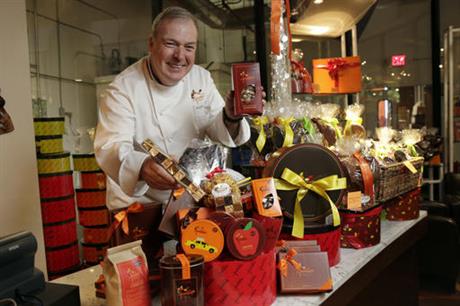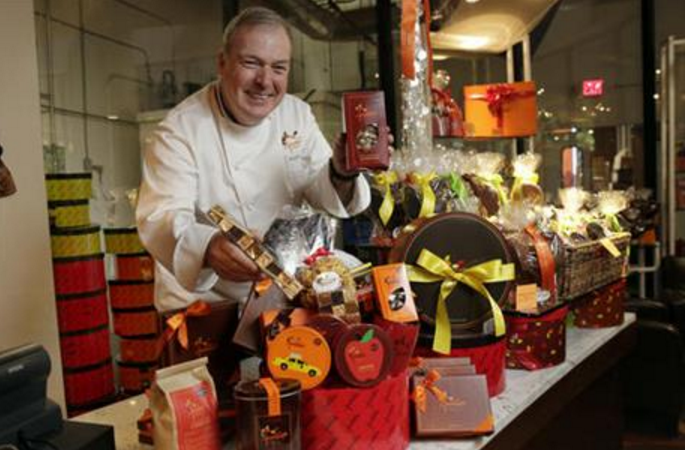By Joyce M. Rosenberg
Associated Press

NEW YORK (AP) — Small and independent retailers are strategizing to try to make the most of an uncertain holiday season.
The last three months of the year are critical for many retailers, who may get half their annual revenue during that time. But consumers who may be hesitant to splurge have led retailers to be increasingly creative about special promotions and discounts, and also prompted many to use technology to help determine what customers want.
“We’ve had such a protracted, sluggish economy that I assume that’s the way it’s going to be,” says Brian Reardon, owner of Monster Music, which sells musical instruments and provides music lessons in Levittown, New York.
Reardon has found it harder to get more people to buy lessons — while the store has 600 students, that’s little changed over the past two years. To encourage prospective students or their parents to sign up, he gives away an acoustic guitar when they pay for six months of lessons that cost $600.
Although overall spending at retailers across the country rose in September and November, it remains weak at many stores that get much of their revenue from the holidays. Sales at department stores fell more than 5 percent the first 10 months of the year, according to the Commerce Department. At electronics stores, they were off more than 3 percent, and they edged up just 0.4 percent at clothing stores. Forecasters generally have predicted retailers will see holiday sales increase a decent 3 percent to 4 percent.
“They’re going to have to provide some level of added value, innovation and quality,” says Joe Brusuelas, chief economist with RSM US, a consulting firm whose clients include retailers. Traditional brick-and-mortal stores have lost business not only to the internet but also to consumers’ growing preference for travel and other experiences over possessions, he says.
Mark Aselstine’s wine club and gift basket sales growth has been flat. So he’s planning to give customers more options when they order from Uncorked Ventures; alongside the company’s $150 baskets will be some priced $115, with cheaper shipping. The baskets can be preselected or customized.
“The market quite honestly simply hasn’t moved in our direction as much as we’d hoped over the past few years,” says Aselstine, whose company is based in Berkeley, California.
Some of his customers are looking for good bottles but at lower prices. He’s seeing more interest in pinot noir from New Zealand, which costs half of what the California version does. Choices like that have brought down the price of baskets the company sells — while two years ago the average price was $322, now it’s $45 to $50 less.
Even companies that seem like they might not have to worry during the holidays are offering deals.
Jacques Torres, who sells his high-end chocolate and other food at nine locations in New York and online, has a special promotion with a sandwich, beverage and ice cream for $10 at his cafe in Grand Central Terminal. Torres, whose chocolates retail for nearly $40 a pound, has a lot of competition and rising expenses like rent and wages.
“We never used to discount anything. Now we do, because we need the sales, we need the advertising, we need the buzz,” he says.
Still, retailers can’t assume shoppers will opt for the cheapest gifts. Customers of Daddies Board Shop are eager to buy skateboards and snowboards with price tags that run into the hundreds of dollars, but are choosy about lower-priced staples, president Daron Horwitz says.
“People are comfortable spending on things that are fun and different, and they spend less on the more-banal products like backpacks and shoes and shirts,” says Horwitz, who sells through his store in Portland, Oregon, and its website.
And strategy doesn’t necessarily have to be about price. At Combatant Gentlemen, a clothing store in Santa Monica, California, with an online shop as well, CEO Vishaal Melwani uses technologies that track the paths that shoppers take on the website and as they walk through the physical store. That information has helped Melwani determine where to place the most popular merchandise; in the Santa Monica store, it has increased by 50 percent the number of transactions the store has had the past two months.
Jordan Dollard’s clothing store, Elsa Fine, caters to women in their 20s and 30s. She spent the last six months studying shoppers’ habits, and realized she needs to buy different merchandise for the Charlotte, North Carolina, location, for its website and for pop-up shops she’ll have this season.
She found that an online shopper wants to quickly find staple items, while a visitor to the store is more likely to be buying a party dress — and wants an experience that includes music and maybe something to drink.
“We’re in a time where walking into a store, picking out what you want and leaving is not enough anymore,” Dollard says.




